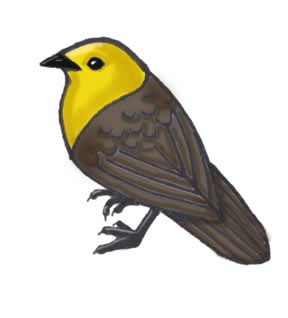

They are found on the mainland and offshore islands of New Zealand.
They live in hardwood forests. They were once found in all the hard wood forests of New Zealand (the “podocarp” hardwood forests) but now are found only in the beech forests.
They are about 6 inches long, brown with a yellow head and breast.
They like to feed high in the trees but will search for food on the ground. Predators, brought by visitors to the island, like rats, possums and weasels (stouts) can climb trees and eat eggs, chicks and nesting females which has brought the yellowhead to the brink of extinction. Clearing of forests has also hurt their numbers.
They eat insects and the nectar from plants (honeydew).
Females nest in tree holes high in trees. They do all of the warming (incubation) of the eggs. Once the eggs hatch both parents will care for the young.
When you research information you must cite the reference. Citing for websites is different from citing from books, magazines and periodicals. The style of citing shown here is from the MLA Style Citations (Modern Language Association).
When citing a WEBSITE the general format is as follows.
Author Last Name, First Name(s). "Title: Subtitle of Part of Web Page, if appropriate." Title: Subtitle: Section of Page if appropriate. Sponsoring/Publishing Agency, If Given. Additional significant descriptive information. Date of Electronic Publication or other Date, such as Last Updated. Day Month Year of access < URL >.
Amsel, Sheri. "Mohua (Yellowhead)" Exploring Nature Educational Resource ©2005-2024. December 14, 2024
< http://www.exploringnature.org/db/view/Mohua-Yellowhead >

